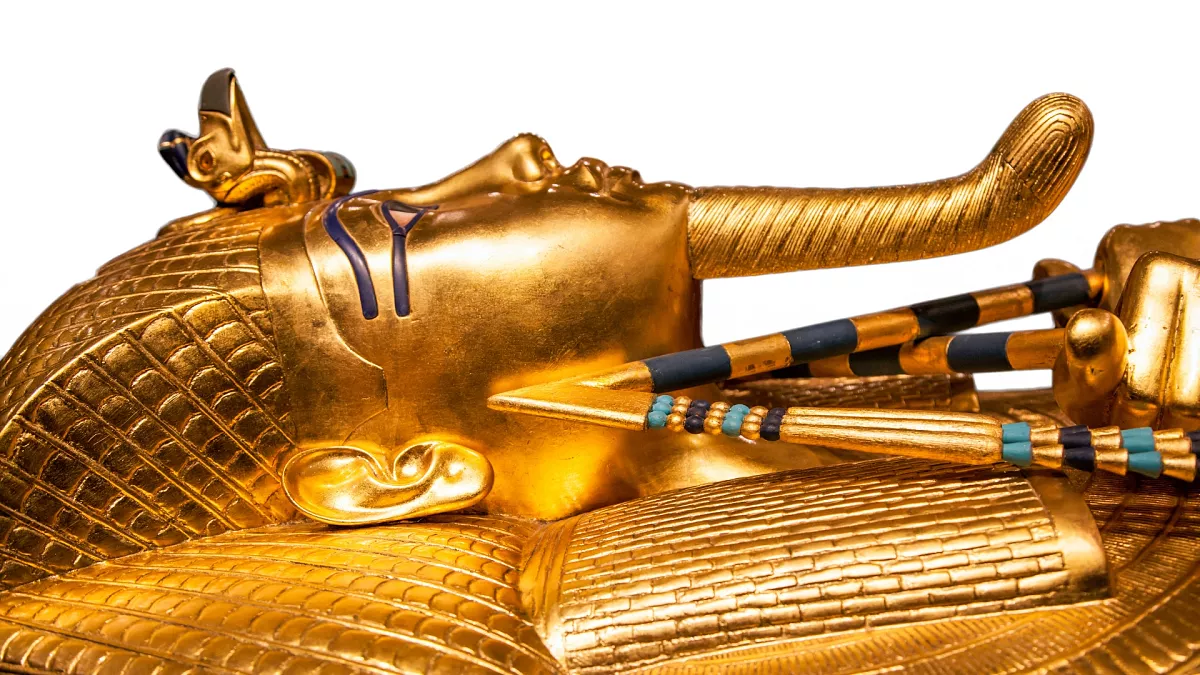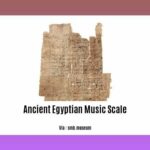When Ancient Mummies Get Mad: 5 Pharaoh Curses
We’ve all heard the whispers about ancient Egyptian tombs – those spooky stories of vengeful spirits and mysterious deaths. But are these Pharaoh curses real, or just scary stories told in the dark? Let’s dive into five of the most chilling examples and see what we can unearth.
1. The Tomb Raider’s Worst Nightmare
Imagine stumbling upon a hidden tomb, treasures glinting under your flashlight. But wait – carved into the walls are warnings, threatening anyone foolish enough to disturb the eternal sleep of the pharaoh within. These weren’t just spooky decorations; they were a big deal to the ancient Egyptians. They believed that messing with the dead could seriously disrupt their journey to the afterlife. Talk about bad karma!
2. King Tut: The Curse Heard ‘Round the World
When Howard Carter uncovered Tutankhamun’s tomb in 1922, it was like opening a time capsule. But this discovery came with a chilling twist. Even though there wasn’t a written curse in the tomb itself, several members of Carter’s team met untimely ends. Newspapers went wild, spinning tales of the “Mummy’s Curse”. Was it really a curse, or did the media hype contribute to the sense of dread surrounding the event?
3. The Unspoken Curse
Sometimes, the scariest curses are the ones we can’t explain. Famed archaeologist Zahi Hawass can vouch for that. During his work at the tomb of Kom Abu Billo, he experienced a string of unsettling incidents, even though there were no written curses to be found. Could it have been the power of suggestion, or something beyond our understanding? It makes you wonder about the energy that might linger in these ancient spaces.
4. The Pyramid Builders Weren’t Messing Around
If you thought tomb raiders had it bad, imagine being the one who built the tomb! The inscriptions found in the tombs of pyramid builders are downright terrifying, full of direct threats and promises of suffering for those who dare disturb the peace. It seems like as time went on, the Egyptians got even more serious about protecting their dead.
5. Science to the Rescue…Or Not?
Okay, so we’ve explored the spooky side, but what does science have to say about all this? Modern researchers have offered up some compelling explanations for tomb-related illnesses, such as dangerous bacteria or even radioactive materials. While these theories seem plausible, they don’t explain everything. Sometimes, a bit of mystery is what keeps us hooked.
The Final Word on Pharaoh Curses
Whether they’re real curses or elaborate superstitions, these tales from ancient Egypt continue to fascinate us. They offer a glimpse into the beliefs of a civilization obsessed with death and the afterlife. So, the next time you hear about a Pharaoh’s curse, remember – it’s more than just a spooky story. It’s a window into a world of ancient beliefs, human anxieties, and the enduring power of the unknown.
What is the Pharaoh’s Curse in 30 Words?
The Pharaoh’s curse is a spooky legend claiming that disturbing an ancient Egyptian pharaoh’s tomb will unleash misfortune upon the trespasser.
Key Takeaways:
- Public interest in the Pharaoh’s curse exploded after the discovery of King Tut’s tomb in 1922.
- Theories about the curse range from magical spells to ancient germs or poisons hidden within the tombs.
- The Pharaoh’s curse reminds us of the significance of death and the afterlife in ancient Egyptian culture. Pharaohs were considered god-like, and their tombs were sacred, meant to remain untouched.
What are the Curses in the Pyramids?
We’ve talked about pyramids and their secrets, but let’s delve into the spine-chilling aspect: the curses. Were they real, or just tales to ward off grave robbers?
Imagine finding a message carved into a wall, written in a language you can’t decipher, but you know it speaks of ill fate befalling those who dare disturb the tomb. That’s precisely what the Egyptians did! They adorned their tombs with hieroglyphs, warning anyone who dared enter that they would face the wrath of the gods – sickness, bad luck, or even death. Talk about an effective deterrent!
But it wasn’t just words. They used powerful symbols too. Take the Uraeus, a cobra representing the goddess Wadjet, acting as a supernatural bodyguard protecting the mummy. Then there’s the scarab beetle, placed over the heart to ensure its preservation for the afterlife, symbolizing rebirth and highlighting the importance of the afterlife journey to the Egyptians.
And let’s not forget magic! Egyptian priests were masters of spells and rituals, using them to enhance the tombs’ security. They even had “Execration Texts,” essentially supernatural hit lists, calling on the gods to punish anyone, particularly enemies, who threatened the deceased’s peace.
Now, were these curses real? Some recount strange coincidences, like people falling ill or even dying after disturbing a tomb. While scientists often attribute this to bacteria or other natural causes, the mystery remains. It’s this blend of history, superstition, and the unknown that keeps the legend of the Pharaoh’s curse alive.
Which Pharaoh did God Curse?
We’ve been discussing Pharaoh curses, and you might be thinking of the famous King Tut. But it wasn’t just Tut’s tomb shrouded in spooky tales. Ancient Egyptians were serious about protecting their Pharaohs in the afterlife. They believed in potent curses, and we’re not just talking about King Tut’s tomb here. Let’s explore five chilling Pharaoh curses that extend far beyond Tut.
1. The Pyramid Texts: Not Your Average Graffiti
Picture this: colossal pyramids with interior walls covered in writing. These weren’t just any scribbles; these were the “Pyramid Texts.” Ancient Egyptians believed in the inherent power of the written word. These texts were like supernatural alarms, warning grave robbers to back off or face the wrath of the gods – meaning dire, divinely ordained consequences!
2. Canopic Jars: Don’t Open These!
Ever heard of Canopic Jars? These containers held the mummified organs of Pharaohs. Let’s just say, disturbing them was not advised. Take Pharaoh Psusennes I from the 21st Dynasty. When archaeologists opened his jars – boom! A sudden sandstorm struck, and people started getting sick. Coincidence? Maybe, but it makes you think.
3. The Sunken City and the Angry Goddess
Off the coast of Egypt lies the submerged city of Thonis-Heracleion. Legend claims it’s cursed by the goddess Isis herself! Imagine a city swallowed by the sea, its treasures guarded by an enraged goddess. Divers and archaeologists might want to think twice before disturbing this underwater realm!
4. Tutankhamun’s Mask: More Than Meets the Eye
We can’t discuss Pharaoh curses without mentioning Tutankhamun’s iconic golden mask. Some believe his spirit was trapped inside, waiting to unleash misfortune upon anyone who dared touch it. Even Lord Carnarvon, the financial backer of Tut’s tomb excavation, met an untimely end. Could it be the curse?
5. The Mummy’s Revenge: Don’t Wake the Dead!
Ancient Egyptians believed that mummies possessed a life force called “ka.” Disturbing a mummy was like provoking a sleeping beast – not a wise move! The story goes that when Pharaoh Ramses II’s tomb was opened in the 19th century, chaos ensued: fires, accidents, you name it! It’s almost as if the Mummy sought retribution.
While we may never know for sure which Pharaoh (if any) God cursed, one thing is certain: the ancient Egyptians were masters of crafting chilling tales. These curses remind us that some mysteries are best left buried.
What is the Curse of the Pharaohs’ Death?
We’ve discussed what pharaohs were and the importance of their tombs. Now, imagine being warned against disturbing these tombs under any circumstances. That’s essentially what the ancient Egyptians believed – they thought disrupting a pharaoh’s eternal slumber would unleash terrible misfortune, possibly even death! This belief, known as “the curse of the pharaohs,” wasn’t just a silly superstition; it stemmed from a deep reverence for their god-like rulers. These weren’t merely kings and queens; they were divine beings, and their tombs were sacred, off-limits spaces.
You might wonder if there’s any proof this curse was real. That’s where things get interesting. While there’s no scientific evidence, stories and legends about this curse have persisted for centuries, passed down through generations. It’s like a spooky story from your grandparents—you know it’s probably not real, but a part of you can’t help but feel uneasy.
Even without concrete evidence, many people today believe the curse is real and wouldn’t dare go near a pharaoh’s tomb, just in case! It makes you think about the power of belief and how a story, even one centuries old, can still hold sway. It’s a captivating blend of history, mystery, and maybe a dash of spooky fun!
- Unlock Elemental 2 Secrets: Actionable Insights Now - April 2, 2025
- Lot’s Wife’s Name: Unveiling the Mystery of Sodom’s Fall - April 2, 2025
- Photocell Sensors: A Complete Guide for Selection and Implementation - April 2, 2025
















